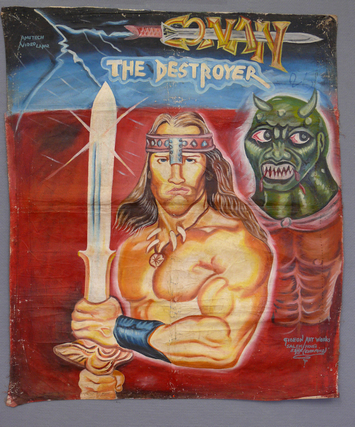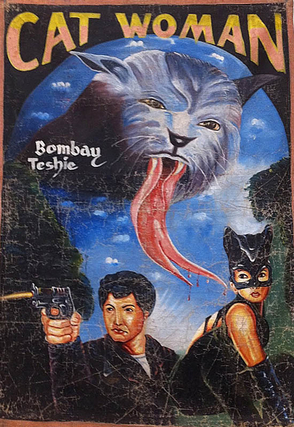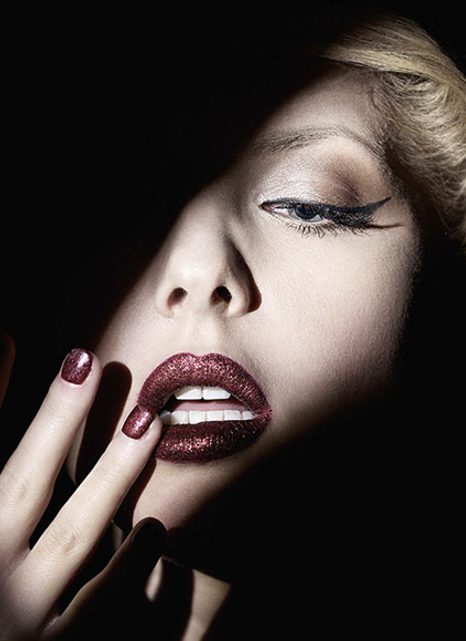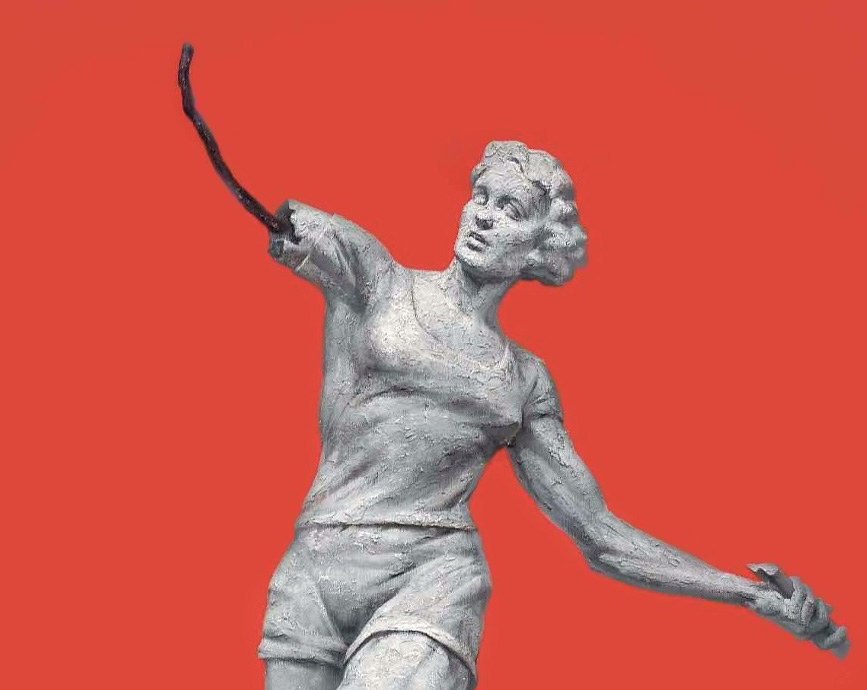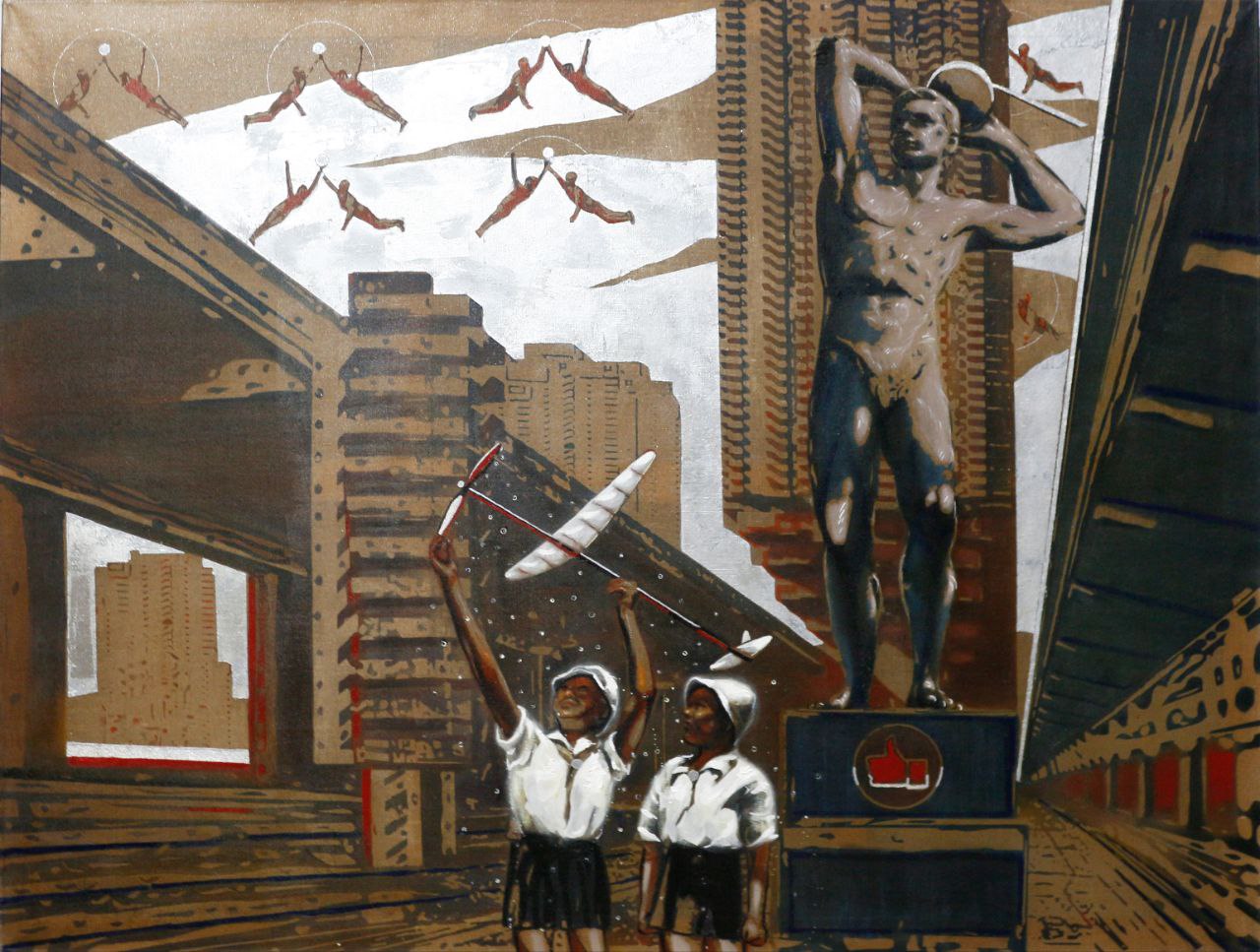Erarta Museum of Contemporary Art is proud to present the show of a disappearing art genre: “Another movie” project tells the story of African hand-painted film posters
The “golden age” of African hand-painted movie posters covers the second half of XX century. The mid ‘90s was the moment when film distributors switched for the globalized and unified standard typographic posters. Stepping after Europe and America, Africa gradually neglected its original cultural phenomenon.
The homeland of African film posters is Ghana, a small and densely populated republic, burdened with 25 million of the poor, transit of cocaine, and gold mining. After getting independence in the mid-twentieth century, the country sank into a condition of permanent riot until Jerry John Rawlings took over in the ‘80s, when the “golden age” of film distribution began.
The technique and stylistics of Ghanaian film posters have no deep roots. The native artistic tradition has always been spiritual sculpture while painting, on the contrary, has always played utilitarian role (signs, billboards, ads). In the situation of low literacy rate, the illustrated advertising signs were highly efficient.
Naive and ancient spirit of ritual arts still influences contemporary African artists, who draw volumes, poses and gestures conventionally, often neglecting perspective. Composition is usually picturesque but hardly classic. It is reminiscent of generous gastronomic still lifes by Pirosmani. But unlike him, the half-starving Ghanaians depict food modestly and symbolically. Though when it comes, for example, to hairdressers’ signs, canvases flourish with abundance of heads and coiffure tools.
Similar heads, colorful witches and horrifying snakes can be seen on African movie posters. The purpose of such posters is to capture a man from the crowd and to involve him into the bizarre world of cinema. Taking into consideration that the Ghanaians have always lived in thrills, the movie posters should literally knock down, and boggle imagination on the instant.
The repertoire of video clubs of the “golden age” was quite consistent with the local passion for the supernatural. The original Hollywood posters were often changed to “be clearer” for an ordinary Ghanaian. So the “Catwoman” poster kept all the original elements, but the lady’s fancy latex dress was intensified the a big cat's head and a snake tongue (snake is the attribute of one of the most respected local goddess).
Not being too precise about the plot details, African artists of the '80s and ‘90s exposed the very essence of the illustrated. Exaggerated and deliberate violence of the posters was the distorting mirror of Western pop culture. At the same time their imagination flew free: they called themselves loud pen-names and edited movie stories to the point of a completely “another movie”.
Ghana’s movie posters are not just a cultural phenomenon. They are a matter for reflection on the metamorphoses of painting within religion, utility and museum art. By 2010, the genre of hand-painted film posters virtually ceased to exist: it happened since the video clubs were no longer in demand and mostly closed. Those which survived prefer typographical posters, printed on paper and usually provided by film producers for free. The last artists of this genre continue to paint posters for tourists and collectors.
The exhibition’s core is the movie posters, made after the “golden age” specifically for collectors. This is professional painting, cleared out of the initial utilitarian purpose and broadly using the naive style of the original Ghanaian signboards Yet through it all, the eccentric expressiveness, eclectics and singularity of the African authors still allow us to see the true Africa which we’ve hardly ever seen.

